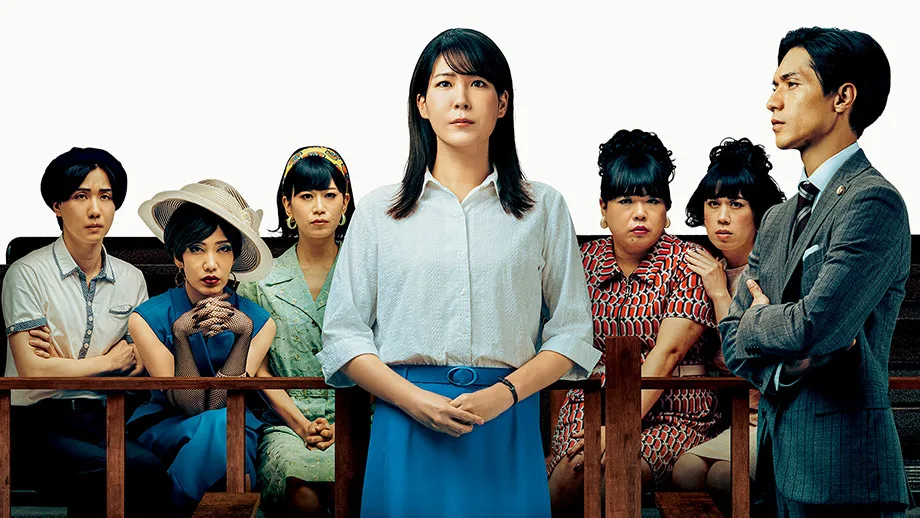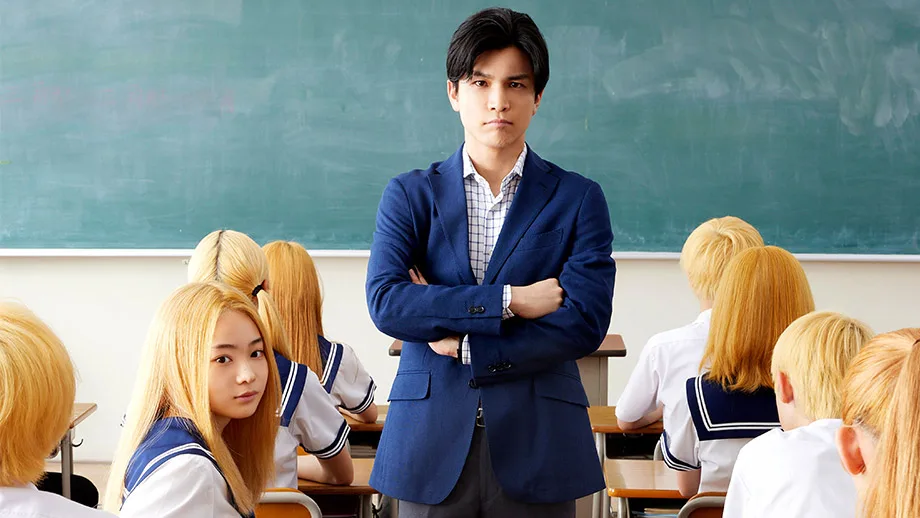It’s easy to get lost in Tokyo if you don’t know where you’re going. Street addresses are approximate, and buildings extend vertically both up and downwards, so the place you’re looking for is probably not visible from the sidewalk. This is true even for movie theaters, which are rarely standalone buildings in Tokyo; only one of this year’s TIFF festival venues, the charmingly retro CineSwitch Ginza, was accessible from the street. The rest were part of larger complexes, multi-use buildings that also housed bars, offices, and the ever-present shopping malls. (Sometimes the entire city feels like a giant shopping mall.) One was even, quite conveniently, two floors up from a conveyor-belt sushi restaurant.
Once you’ve found a place, it’s doable—if hardly easy—to find it again. But when attending a film festival in Japan, it’s advisable to allow some extra time for when you inevitably take the wrong elevator or turn down the wrong alleyway in search of a venue you’ve never been to before. It helps that the Tokyo Film Festival has a presence on the streets surrounding these venues: Walking past a block-length banner displaying posters for every film in the program, or a Q&A session happening on a temporary stage in the middle of a public plaza, you can feel reassured that at least you’re in the right neighborhood.
Then the festival blends into the din of drugstore jingles, chirping crosswalks, and barkers calling out to passersby to come inside and enjoy their restaurants, karaoke lounges, and standing bars. Once again, you’re on your own. But when you get close enough to the venue, another voice joins the chorus, accompanied by a familiar sight: A volunteer in a grey hoodie, welcoming festivalgoers while holding a sign with the name of today’s film in English and Japanese. If you show them your badge and make eye contact, they’ll gesture in the direction of where you need to go.
The noise of the street disappears when you step into the theater, and the serene feeling that follows is not unlike the one you get when entering the hushed wooden interior of a Buddhist temple. This contrast between outside and inside, the overstimulating process of finding your destination, and the cozy relief of actually getting there, is a quintessential Tokyo experience. Japanese people tend to be more guarded in public as well, but Japanese films let their guard down inside the safe, enveloping darkness of the cinema.
This is certainly true of my favorite film from this year’s Tokyo Film Festival, “Sato and Sato,” a sensitively observed, superbly executed relationship drama from director Amano Chihiro. Amano’s film addresses, without judgment, a relationship dynamic that’s especially difficult for heterosexual couples to navigate, not just in Japan, but globally: What happens when a woman outshines her male partner professionally, leaving him feeling inadequate and left behind?
Here, it happens almost by accident, as Sachi (Kishii Yukino) decides to study for the bar exam alongside her boyfriend (and later husband) Tamotsu (Miyazawa Hio). She’s just trying to be a supportive partner, but while Tamotsu has to retake the exam multiple times, Sachi passes on her first try. Things get even more awkward when Sachi takes a job at a law firm, offering to support their new family so Tamotsu can concentrate on his studies. She means well, but seeing her live his dream is undeniably hurtful to Tamotsu, and Schi struggles with maintaining her sense of self within their marriage alone. Then Sachi discovers that she’s pregnant, and the gap between the couple grows into a canyon as Tamotsu reluctantly becomes a stay-at-home dad.
There’s a version of this movie where his wounded pride turns Tamotsu into a chauvinistic jerk, and “Sato and Sato” honestly examines how patriarchal values and the pressures on Tamotsu as the eldest son in his family contribute to the slow erosion of the couple’s relationship. But Amano is careful never to demonize either partner. Instead, we see where both sides are coming from; neither Sachi nor Tamotsu is perfect—he can be pretentious, while she buries herself in work to avoid conflict—but they’re not bad people, either. In the end, there’s no one to blame for their divorce, just sadness and lingering regret.
“Sato and Sato” is beautifully acted, and writer Makoda Kumagai packs the screenplay full of ironic details: The “Congratulations!” Sachi quickly wipes off a cake after Tamotsu fails the bar exam the first time, or the elderly waitress with shaking hands who brings the couple coffee during a strained exchange at a café. These effectively break up the tension, allowing “Sato and Sato” to expand and retract in a symphony of emotion. Calling it a “Japanese ‘Marriage Story’” isn’t totally off base. But Amano’s film operates on a subtler, less showy emotional register, and is its own film for it—the fact that it comes from a female perspective makes it stand out as well.

Kishii’s performance as Sachi in “Sato and Sato” is extraordinary. But another performer who also made an impression on me was Nakagawa Miyu and her courtroom monologue at the end of “Blue Boy Trial.” The film itself is a straightforward historical drama, produced independently on a modest budget. (Luckily for director Iizuka Kasho, some parts of Tokyo still retain the Showa-era vibe of the film’s ‘60s setting.) “Blue Boy Trial” is based on a true story, in which a doctor who performed gender-affirming surgeries was arrested and put on trial in 1965 on the pretense that he had violated Japan’s Eugenics Protection Law by effectively sterilizing otherwise “functional” people.
The trial was a sideways attempt to crack down on trans women sex workers, who, thanks to a loophole in Japanese law, couldn’t be held on prostitution charges. But it had the potential to make gender-affirming care, which up to that point was technically allowed in a similar legal gray area, forbidden in Japan. And so trans women were asked to testify in the doctor’s trial, in order to prove that their care was medically necessary. Nakagawa—also playing a character named Sachi—is the star witness, and her emotional arc as she goes from quietly passing to publicly claiming her trans identity is both convincing and deeply affecting. (I may have teared up a little during her big speech at the end of the movie.)
She’s even more impressive when you consider that this is her first film role: She was discovered at an open audition, part of director Iizuka’s commitment to casting trans people in his films. Iizuka himself is a trans man—his first film, 2011’s “Our Future,” was based on his own life experiences—and a vital voice in a country where, while it’s made progress in terms of social acceptance of trans people, legal protections are still very much in flux.

Another modestly budgeted Japanese indie that stood out at this year’s Tokyo Film Festival was “Poca Pon,” a film whose director’s bio makes sure to note that he still has a day job. Writer-director Ohtsuka Shin-ichi’s second feature is also based on a true story, albeit a far more gruesome one than Iizuka’s inspiration for “Blue Boy Trial”: “Poca Pon” contains elements lifted from the Kobe Child Murders, in which a 14-year-old boy murdered two younger children and was released after serving just under seven years in prison for the crimes.
Ohtsuka’s film is not a procedural, although it does contain some shocking scenes depicting the crimes of its formerly incarcerated serial killer, who, as the story begins, moves in next door to a single mom and her two sons in an anonymous working-class apartment block. Instead, Ohtsuka describes “Poca Pon” as a sort of moral thriller, exploring the dark psychological dimensions of what might happen if a murderer decided to become a virtuous person—not out of true contrition, but as a sadistic form of punishment for the families of his victims.
This dynamic comes to upsetting life in a scene where the mother of a murdered boy breaks down in anguish after learning that her son’s killer is a vegetarian who doesn’t eat meat for moral reasons: Wasn’t her son’s life worth more than that of a cow or pig?, she cries. Further complicating the film is the relationship between Shinichi (Ozeki Shinji), a.k.a. the notorious “Boy A,” and Kenta (Konosuke Harada), Shinichi’s teenage neighbor, who thinks that he’s a pretty cool guy. He’s certainly more attentive than Kenta’s alcoholic mom.
Combining family drama, social commentary, and deviant psychology, in many ways “Poca Pon” reminded me of the work of Kiyoshi Kurosawa, down to a cryptic plot point where Kenta and his family are slowly driven insane by a mysterious noise coming from Shinichi’s apartment. The cinematography, full of menacing shots of empty concrete passageways and muddy riverbeds, manages to evoke the film’s sinister undertones amid its ordinary setting, aided by a bone-rattling score from jazz musician Kikuchi Karioshi. Kurosawa fans should really take to it if it secures distribution abroad.

And although elements of its social satire are very specifically Japanese, I could also see overseas potential for this year’s Tokyo Film Festival audience award winner, “Blonde.” Writer-director Sakashita Yuichiro’s film aims at the specific ways that the Japanese tendency to “go along to get along” can lead to apathy and self-indulgence. He does so through the character of Ichikawa (Iwata Takanori), a middle-school teacher who, as the story begins, informs the audience that education is the foundation of Japanese society, so he’s pretty much keeping the country going all by himself.
With “Blonde,” Sakashita accomplishes the difficult task of making extensive voiceover help rather than hurt his film, using sharp writing and editing that play up the ironic contrast between Ichikawa’s self-image and the reality of his situation. He’s a lazy, self-pitying character whose vanity and lack of moral character are played for laughs, a buffoon who’s annoyed when his students embark on an act of collective protest because he’s in the middle of binge-watching an anime series and really doesn’t have time to get involved in something like this right now.
Still, through sheer inertia—not to mention his terror at being seen as old and out of touch—Ichikawa ends up partnering with the leader of the protest, Midori (Shiratori Tamaki), to change the school rules (and save Ichikawa’s job in the process). Sequences lampooning the Kafkaesque absurdity of Japanese school bureaucracy may resonate better with local audiences; the Japanese critics at my P&I screening certainly seemed to enjoy them. But there’s also a coming-of-middle-age element in “Blonde” that will make thirtysomethings worldwide cringe in recognition.
Sakashita’s satirical wit makes “Blonde” a tremendously entertaining viewing experience, full of the kind of pithy one-liners you repeat to your friends on your way out of the theater. One joke in particular got a big response at the screening I attended: Midway through the film, Ichikawa and Midori meet up at a movie theater. They whisper through the previews, but when the film begins, Ichikawa gets up to leave. “Aren’t you going to stay for the movie?” Midori asks. “I only watch movies on my phone,” Ichikawa replies, puffed up with unearned, idiotic pride. That’s the kind of joke that’s going to get a laugh from film critics anywhere.












